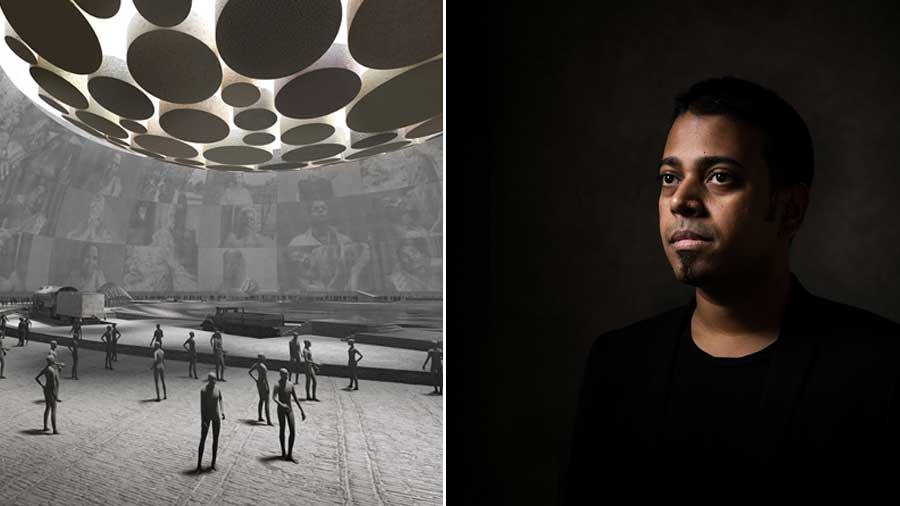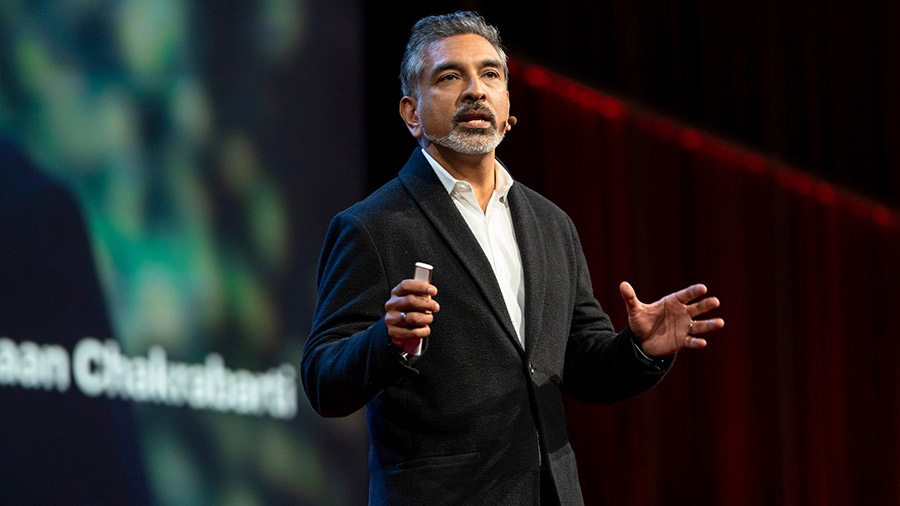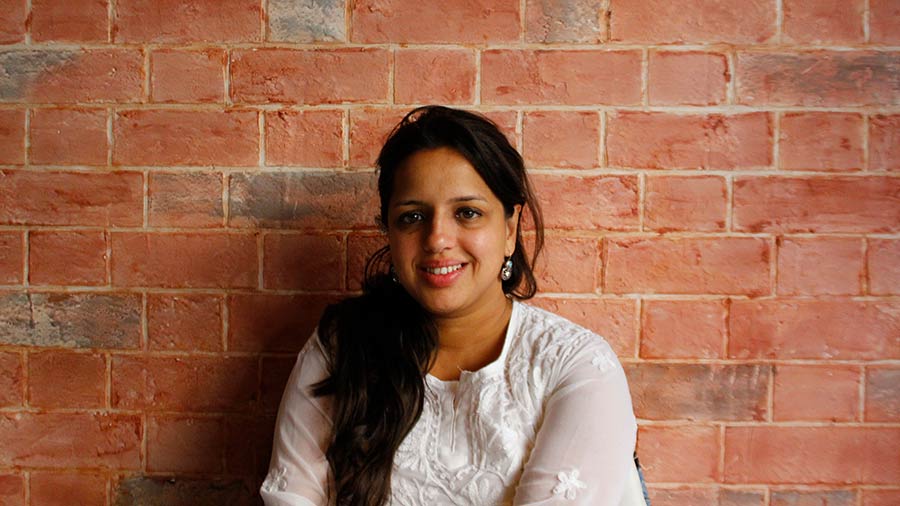For Aurgho Jyoti, founder and creative director of AUR (Architecture Urbanism Research), architecture is a responsibility informed by social relevance and cultural significance. Despite having a decorated background in architecture from the School of Planning and Architecture in Delhi, and later at Harvard, Cornell, and MIT — he considers his experiences of travelling through India with his family to be his greatest teachers.
In a candid conversation with My Kolkata, Aurgho Jyoti opens up about his connection to the city, his architectural philosophy, and his experience of working as the chief architect of the soon-to-be-launched Virtual Kolkata Partition Museum (V-KPM), part of the Kolkata Partition Museum Project.
Edited excerpts from the interview follow
My Kolkata: What were the elements in your childhood that led to you deciding to be an architect? How did Kolkata play a role in it?
Aurgho Jyoti: I had a simple upbringing without the distractions of the big city, growing up in Asansol, in the heart of the industrial belt of Bengal. My grandfather worked as a miner in Eastern Coalfields, and my father worked in finance at the Indian Iron and Steel Company in Chasnala and occasionally in Burnpur.
Every year we would visit our relatives in Kolkata. The river, the two bridges, the mid-rises along Chowringhee Road across the Maidan, the repurposed colonial buildings, both institutional and governmental, and most importantly, the people, are my earliest memories of the city. Kolkata was always the ‘big city’ for me.
I was three when my mother, who is a school teacher, noticed that I was drawing objects around me and she enrolled me in an art school as a toddler. I was a rebellious, stubborn kid. Finally, within a year, it just became the place I looked forward to going. I went there for 12 years. Around age eight, I started drawing realistic paintings. By age 10, I could do portraits. I would participate in every drawing and painting competition, and win them. I distinctly remember around age seven I started saying I wanted to become an architect because I had an older cousin who was an architect. But the whole thing was an enigma to me and my family did not know much about it. All along I was good in school staying at the top of my class. Around 9th grade, I stopped going to art school to concentrate on my studies.
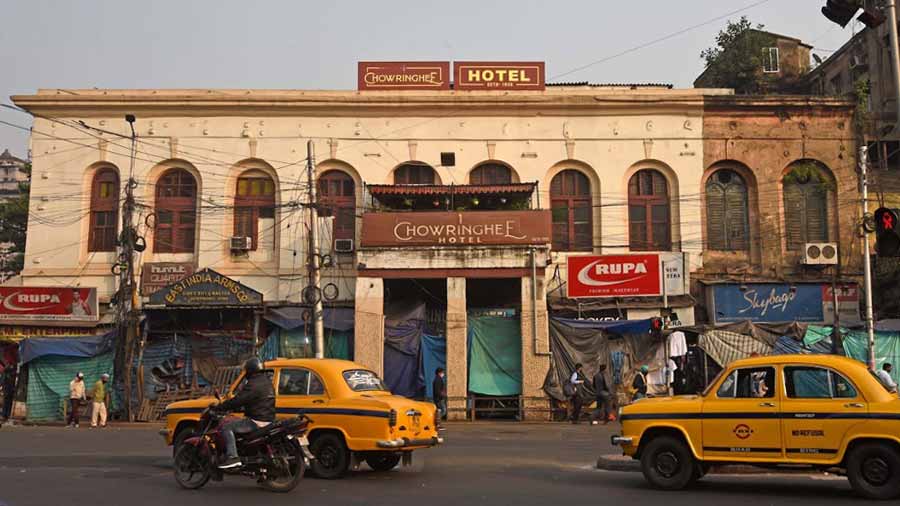
Kolkata was always the ‘big city’ for Aurgho Jyoti and the mid-rises along Chowringhee Road are among his earliest memories of visiting the city TT Archives
Soon after my mother and I moved to Kolkata in 2001. I started in 11th grade at La Martiniere for Boys. Those were two stressful years — getting used to a new life, a new urban environment with the pressure of competitive entrance tests. Falling back on architecture, my first interest and love, was the only sensible thing to do. I received admission from the School of Planning and Architecture (SPA) Delhi, considered the best architecture school in the country. When it was all set and done SPA felt like a place I was meant to be — not based on competitive accidents of the education system but a natural affinity towards something. It’s been 20-plus years now since I started architecture. I could not have done anything differently.
I grew up hearing stories about loss and the Partition from my grandparents, who are all from East Bengal, now Bangladesh.
How did you get involved with the virtual Kolkata Partition Museum project?
I grew up hearing stories about loss and the Partition from my grandparents, who are all from East Bengal, now Bangladesh. My paternal grandfather migrated to what is now India long before the Partition and started working as a miner in the coalfields of central India. After the Partition they never had a chance to return and ended up with severed families and lost belongings. Now that all my grandparents have passed I miss being able to talk to them about their past. They were my tangible connection to history.
I got to know Rituparna Roy (managing trustee of the Kolkata Partition Museum) from the Kolkata Partition Museum Trust (KPMT). We started talking about creating a virtual museum specifically highlighting the experience of Partition in Bengal. Rituparna Roy is a well-known Partition scholar and started the Trust in 2018 with Professor Tapati Guha Thakurta, Dr. Jayanta Sengupta, and Kolkata residents Abhijit Pathak and Neelina Chatterjee. We created a design and curation team and content and research. Everyone was highly invested in the Partition space. From Anindita Ghoshal, a renowned historian who led the Oral History Project and the Event Galleries to Debasish Mukherjee, a well-known artist in the Partition space, and Sayantan Maitra, an artist and curator who created the ‘No Man’s Land’ project.
My partner Subhradip Roy led the design development of the museum working closely with materials. The research team interviewed and collected interviews from remote corners of the country creating a short but amazing oral history project that highlighted the subaltern experience of partition. The team included Sumallya Mukhopadhyay, Swagatalakshmi Saha, Asmita Ray, Firdousi Akhtar Basid, Mohana Chatterjee, and Gitanjali Roy.
KPMT has plans for a future physical museum. The soon-to-be-launched virtual museum, for now, explores ideas around the Bengal Partition.
(Know more about the project here)
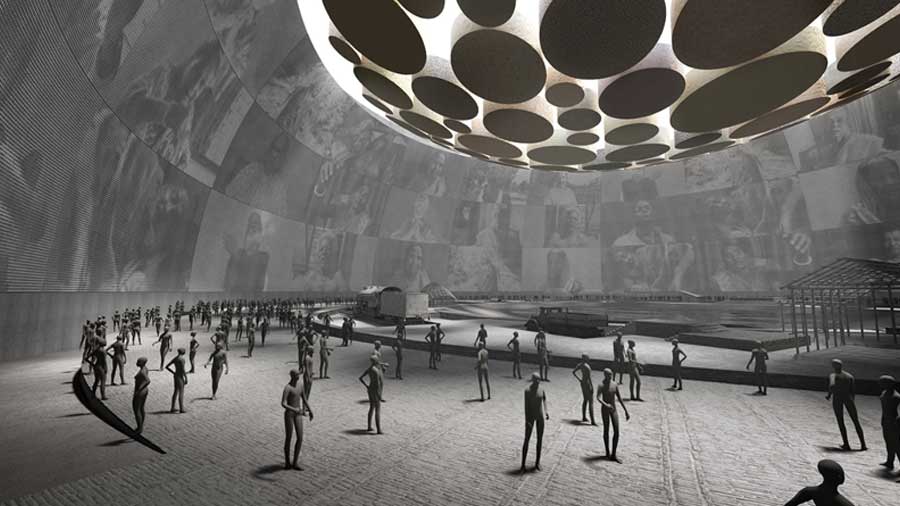
The central space with refugee imprints and floating earth of the virtual Kolkata Partition Museum
What would you say have been some of the highlights of your academic life given that you have been to some of the best universities in the world: Harvard, Cornell, MIT?
Attending graduate schools in the US was part of my cross-cultural immersion journey. These universities, though valuable, represent just a fraction of my education. I was fortunate to make some really good friends from all across the world. That matters a lot in the formation of your worldview. Before coming to the US, I had already lived and worked in Rome and Shanghai, apart from Delhi and Kolkata, but graduate school at Harvard and Cornell provided the world under one roof. It gave me the framework to critically think about things.
My real learning came from exploring various parts of India annually, thanks to my parents’ commitment to two weeks of vacation every year. International travel during and after undergrad also broadened my horizons. Working in different cultures enriched my architectural perspective more than formal education. In retrospect, these experiences were crucial, but personal reflection and social engagement defined my approach to architecture. It’s a highly subjective and personal field and I have been interested in knowing what architecture meant to me as a personal reflection.
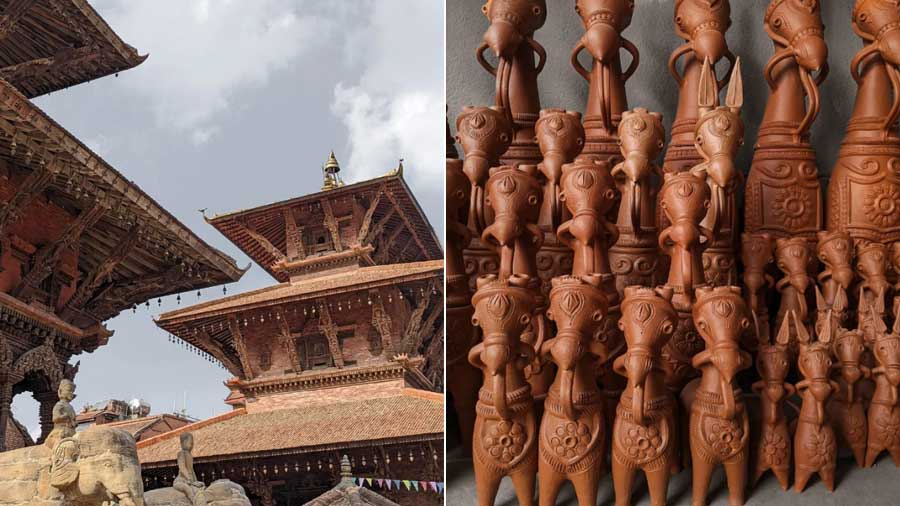
For the architect, travels around the country and the world enriched his architectural perspectives more than formal education. In picture: Snapshots from field trips to Nepal (February 2022) and Bishnupur (March 2022)
What would you say your architectural philosophy is?
I view architecture as a responsibility, not just a service. The focus is on creating socially relevant, culturally significant, and environmentally resilient buildings. I am particularly interested in architecture that is deeply informed by history and materiality while crafting narratives through memory and time. I explore the tension between the global-local and urban-rural contexts, with a keen interest in how people consciously and subconsciously interact with space. Conceptually Finnish architect and writer Juhani Pallasma has had a big impact on my thoughts.
One of my ways of thinking about a new project is to imagine the project as a ruin. Can the post-human of the future stitch a narrative back in time to the relationship of the project with the rest? In essence, we try to design a ruin of the future.
From a broader research perspective, I have been interested in human migration, indigenous communities, and climate change. The human story is a story of migration. Cities and buildings are imprints of migration. Partition was the largest forced human migration in history and our virtual museum project has tried to address representation of those stories. Our work also involves community projects with subaltern communities in the Indian subcontinent. We often engage with memorialisation projects
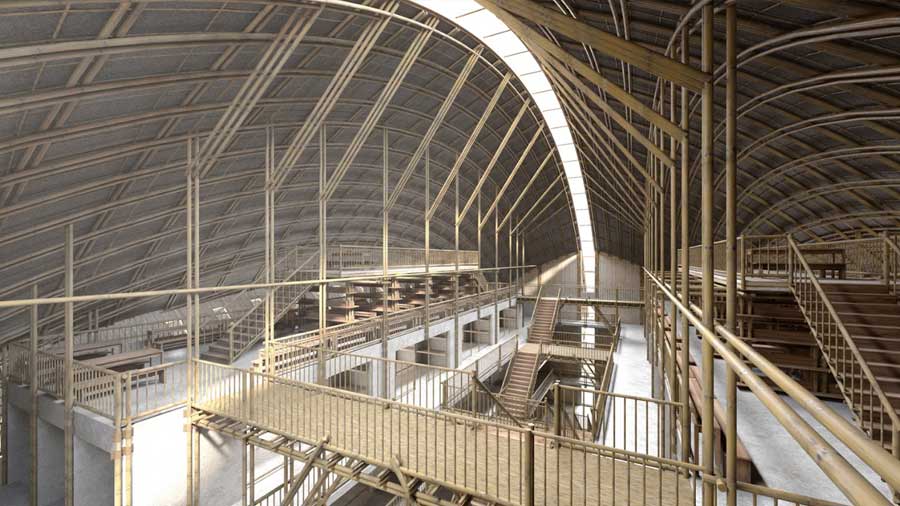
Sunderban Shelter Project of AUR, the Storm Shelter and Agricultural Community Centre
The work [at AUR] is deeply influenced by history, materiality, and memory
Tell us a little bit about your firm AUR — its inception and how it has grown.
After my graduate studies at Harvard, I worked at Skidmore, Owings & Merrill (a Pritzker Laureate firm) in San Francisco, focusing on high-profile projects and complex buildings. Concurrently, I delved into extensive reading, particularly about India, to understand its history and post-colonial context. Key authors included Arjun Appadurai, Homi Bhabha, Gayatri Spivak, and Romila Thapar. In 2017-2018, I initiated side projects, ultimately founding AUR in 2019 as an architecture practice in India and the US. AUR is a play of words. AUR stands for ‘Architecture Urbanism Research’. The work is deeply influenced by history, materiality, and memory. In Hindi, AUR signifies the ‘other’ and signals a ‘prompt’. As an architecture practice, it is invested in the urban condition — context and content for architecture and also in historical, social, and anthropological research informs our intuitions.
We’ve worked on various cultural, social, and residential initiatives, including a collaboration with the World Bank and Total Synergy Consulting Private Limited (TSCPL) in India for Buddhist cultural heritage projects in Lumbini and Sarnath, and an artisan centre in Agra. We are also working on community projects with the Shelter Promotion Council India (SPCI) and Dighir Ganguly Foundation (DGF) trust, both NGOs in the Sunderbans. While the former is focused on public art, events, and social projects, DGF is working on the healthcare and education of marginalised communities in the Sunderbans.
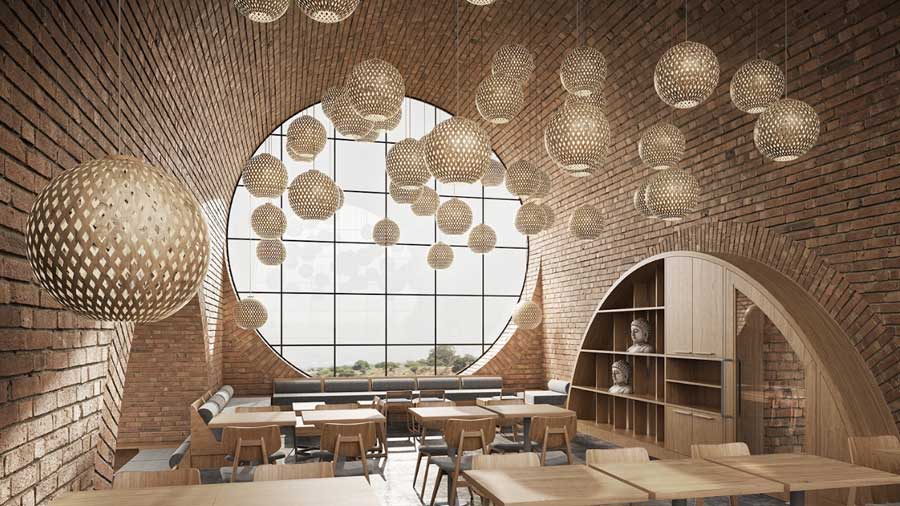
Lumbini Cafe for pilgrims and tourists is a barrel vaulted cafe space
We are creating a health centre and a school project that will function as a storm shelter during cyclones and floods while collaborating with the Munda tribal community. In the US, our focus is on smaller-scale residential work.
Living and practising in both countries has been enriching, thanks to my supportive wife who is also my management powerhouse. While the regulatory environments differ significantly, I find the diversity of possibilities in under-regulated regions more inspiring. My geographical focus remains the Bengal Delta region. My partner in India, Subhradip Roy, and his strength of technical knowledge in architecture and how that is well integrated with design in a seamless process is highly crucial for our projects.
Coming back to the Kolkata Partition Museum, what are some of the highlights of the project?
The project serves as a contemplative exploration of the Partition’s complexities, offering an immersive cinematic experience within a museum setting. It prioritises the subaltern refugee narrative, creating the museum as an ethical project rather than a colonial project. We engaged with material memory from different periods in Bengal’s history, creating a chronological journey through time. In the virtual environment, we worked with material textures, symbolising various temporal thresholds — pre-colonial, colonial, and post-colonial — through mud, earth, brick, terracotta, plastered white wall, and concrete. Transition spaces between these layers prepare visitors for the central archaeological site. This central space features memory fragments related to refugee habitation and navigation, surrounded by textured refugee portraits. The reflection pool at its centre mirrors the floating earth from different regions of Bengal.
Personally, I think with this project there have been two major things — cementing my interest in history and renewing my love for and belief in art.

In the design of the virtual museum, the transition expanse between central archaeological space and concentric spherical spaces represent historical periods
Did any museums particularly inspire you while you were designing the V-KPM?
I don’t think any museum in particular but definitely artists such as James Turrell who works and plays with light.
What were some of the challenges that you faced while working with the virtual space?
In a physical project in real space, you have to deal with a lot of difficult realities, which can also become opportunities. The biggest realities for an architect are gravity, capital, and services. We did not have to think about these aspects. It is almost like an artistic experiential sculpture. Integrating the oral history project was another challenge that was also an opportunity. If I had to pick a singular challenge it would be about bringing forward the tactile and the tangible nature of a physical space into a virtual space. We invested in materials but more importantly the expression of materials — their textures, and scale. We made the highly physical into the virtual by highlighting the materials and light.
The Western gaze and colonial mindset of looking at Kolkata deeply saddens me
What are some of your future projects?
The first would be to change the perception of Kolkata through architecture and dialogue. It needs to be seen as a global city rooted in its cultural, creative, and intellectual foundation. Contemporary spaces, both new and repurposed, need to address their indigenous and colonial history. Setting a cultural dialogue with the festive and the ephemeral on one hand and the creative and the intellectual on the other — that is very much the core of the city
The Western gaze and colonial mindset of looking at Kolkata deeply saddens me. Mother Teresa responded to the urban condition of post-war and post-Partition Kolkata from a purely humanitarian perspective but in the process completely tarnished the image of the city. The intellectual, creative, and cultural power of Kolkata was completely sidelined and what got highlighted was the Kolkata of the destitute, Kolkata as a city of slums. I want to change that but I don’t know how much of it I will be able to do in this lifetime.
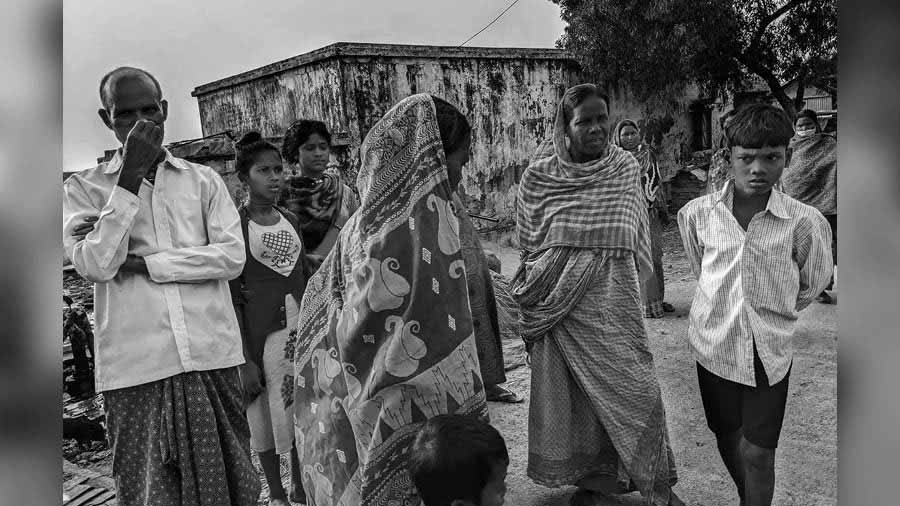
‘The 'Munda' tribal community of the village Sardarpara in the Sunderbans. AUR with Shelter Promotion Council will start the construction of a health center and storm shelter in December 2022’ @aurgho.jyoti/Instagram
The second one may sound crazy. I want to create a ‘Museum of Colonialism’ in the centre of London. It would highlight the frictions of encounter, the beauty of the hybrid condition, and not forget the legacies of human crime committed during colonialism.
